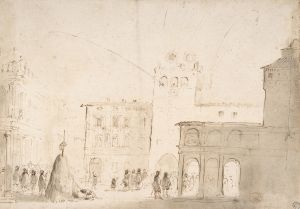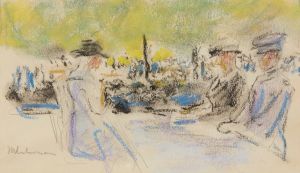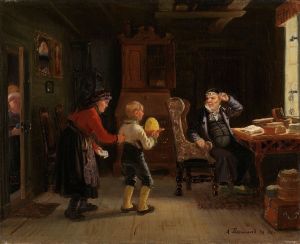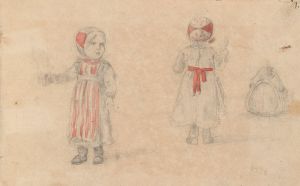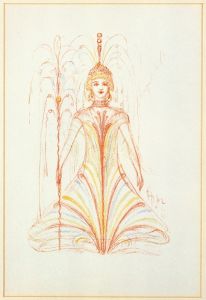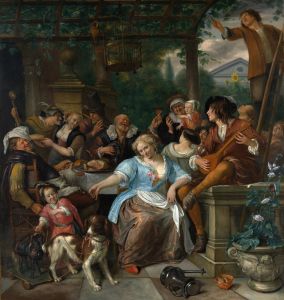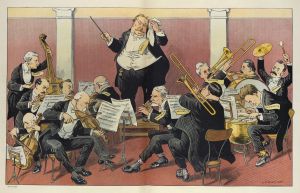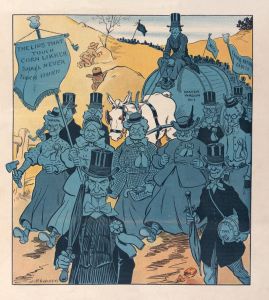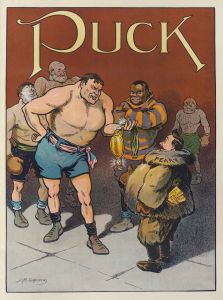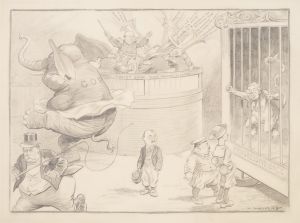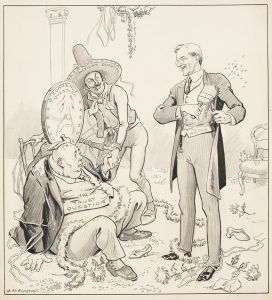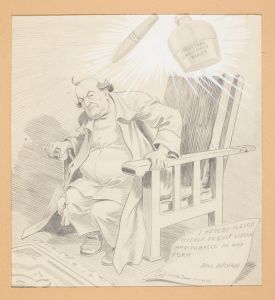
July the 4th 1902
A hand-painted replica of Louis Glackens’s masterpiece July the 4th 1902, meticulously crafted by professional artists to capture the true essence of the original. Each piece is created with museum-quality canvas and rare mineral pigments, carefully painted by experienced artists with delicate brushstrokes and rich, layered colors to perfectly recreate the texture of the original artwork. Unlike machine-printed reproductions, this hand-painted version brings the painting to life, infused with the artist’s emotions and skill in every stroke. Whether for personal collection or home decoration, it instantly elevates the artistic atmosphere of any space.
Louis Glackens, an American illustrator and artist, created the painting "July the 4th 1902," which captures the essence of American Independence Day celebrations in the early 20th century. Glackens, born in 1866 in Philadelphia, was known for his work as a cartoonist and illustrator, contributing to various publications, including Puck magazine. His artistic style often combined humor and social commentary, reflecting the cultural and societal norms of his time.
"July the 4th 1902" is a vibrant depiction of a typical Fourth of July scene, showcasing the festive spirit and communal gatherings associated with the holiday. The painting illustrates a lively street scene, bustling with people of all ages engaged in various activities. The composition is rich with detail, capturing the joyous atmosphere of the celebration. Fireworks light up the sky, adding a sense of excitement and wonder to the scene. The use of bright colors and dynamic movement within the painting reflects the exuberance and patriotic fervor of the occasion.
The artwork provides a glimpse into the customs and traditions of Independence Day in the early 1900s. During this period, the Fourth of July was a significant national holiday in the United States, marked by parades, fireworks, and public gatherings. It was a time for communities to come together, celebrating the nation's independence and expressing their patriotism. Glackens' painting encapsulates these elements, offering a visual narrative of the holiday's cultural significance.
Louis Glackens was part of a family of artists, with his brother, William Glackens, also being a notable painter associated with the Ashcan School. While Louis Glackens primarily worked as an illustrator, his paintings, including "July the 4th 1902," demonstrate his ability to capture the vibrancy of everyday life. His work often reflected the social dynamics and urban experiences of his era, providing insight into the American lifestyle at the turn of the century.
The painting is an example of Glackens' skill in combining illustration with fine art, creating works that are both visually appealing and culturally resonant. His attention to detail and ability to convey emotion through his characters and settings make "July the 4th 1902" a noteworthy piece in his body of work. The painting not only serves as a historical document of American life but also highlights Glackens' contribution to the art world as a chronicler of his time.
"July the 4th 1902" remains a testament to the enduring tradition of Independence Day celebrations in the United States. Through his art, Louis Glackens captured the spirit of a nation coming together in celebration, reflecting the values and aspirations of American society in the early 20th century. His work continues to be appreciated for its historical significance and artistic merit, offering a window into the past and the cultural heritage of the United States.





